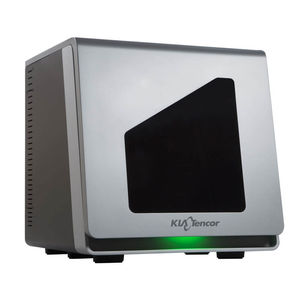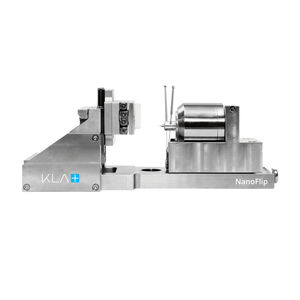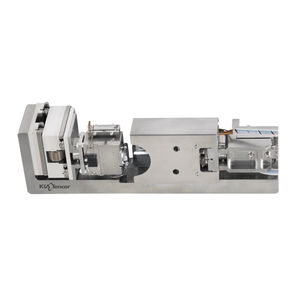
- Products
- Hardness test indenter
- KLA Corporation
Hardness test indenter Nano Indenter® G200
Add to favorites
Compare this product
Characteristics
- Applications
- for hardness test
Description
The Nano Indenter® G200 system is an accurate, flexible, user-friendly instrument for nanoscale mechanical testing. The G200 measures Young’s modulus and hardness, including measurement of deformation over six orders of magnitude, from nanometers to millimeters. The nanoindenter system can also measure the complex modulus of polymers, gels and biological tissue as well as the creep response (strain rate sensitivity) of thin metallic films. Modular options can accommodate a variety of applications: frequency-specific testing, quantitative scratch and wear testing, integrated probe-based imaging, high-temperature nanoindentation testing, expanded load capacity up to 10N and custom test protocols.
All nanoindentation measurements rely on the precision of the applied load and the accuracy of the displacement data. The Nano Indenter G200 is powered by electromagnetic transducers to ensure precise measurements. The instrument’s unique design avoids lateral displacement artifacts.
• Electromagnetic actuator to achieve the high dynamic range in force and displacement
• Modular options for imaging scratches, high-temperature nanoindentation measurements, and dynamic testing
• Intuitive interface for quick test setup; testing parameters can be changed with just a few mouse clicks
• Real-time experimental control, easy test protocol development and precise thermal drift compensation
• Award-winning, high-speed Express Test option to measure hardness and modulus
• Versatile imaging capabilities, survey scanning, and streamlined test method development for rapid results
• Simple determination of indenter area function and load frame stiffness
Catalogs
Other KLA Corporation products
Nanoindenters for Nanoindentation Hardness Testing
*Prices are pre-tax. They exclude delivery charges and customs duties and do not include additional charges for installation or activation options. Prices are indicative only and may vary by country, with changes to the cost of raw materials and exchange rates.







